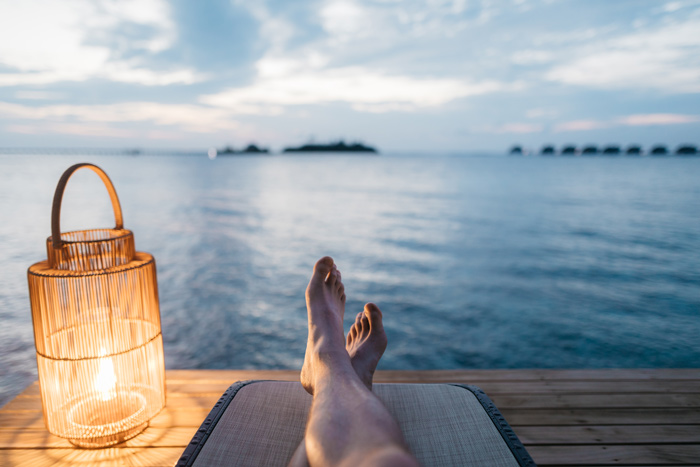How To Do Progressive Muscle Relaxation – Home practice
Progressive Muscle Relaxation can be particularly helpful for some extra self-care that you can do at home.
I often explain progressive muscle relaxation to my clients for use in conjunction with regular massage.
Progressive muscle relaxation (or PMR) can help manage stress, help you fall to sleep and help manage tension in muscles.
It can help target specific areas of tension. These are commonly found in the neck, shoulders and Temporomandibular Joint (TMJ). It can also help by disrupting the development of anxiety and tension as well as reducing stress.
The principle of this technique is to tense up particular muscle groups and then relax them. Over time and with regular practice more awareness of where we are holding tension can be gained, reminding our bodies to relax. Practising progressive muscle relaxation is something that can easily be achieved at home in your free time and our clients report that with repeated practice this relaxation training can be highly effective.
Many of my clients use Progressive muscle in conjunction with mindfulness.

First steps how to do progressive muscle relaxation.
- Chose surroundings that you can relax in… turn off the TV, put a do not disturb sign on the door and allow yourself a few minutes of a bit of time.
- Make yourself comfortable – chose a comfortable chair, loose clothing and take off your shoes.
- Make sure you are warm and have pleasant surroundings such as soft lighting
The technique
- Once your space is ready and you feel comfortable, slow your breathing and give yourself permission to relax.
- When you are ready to go tense the muscle group as described below. You should feel tension but not so much that you feel pain. Keep the muscle tense for 5 seconds.
- Relax the muscles and keep them relaxed for approximately 10 seconds. Some clients find it helpful to talk out loud and tell themselves to relax.
- This tensing and relaxing of muscles should be performed on all the body parts as described below.
The routine
Start from your head an work down to your toes……
- The forehead: Lift your eyebrows as high as you can and hold them tense.
- Face: Tighten the muscles in your face, your cheeks and your nose, hold them tense.
- Jaw: Hold the jaw slightly open and tense it.
- Neck and shoulders: Lift shoulders up, put head forward and tense
- Arms: tighten bicep muscles in your upper arms; hold them tense (like you are Popeye the sailor man!).
- Hands and forearm: Make a fist; hold hands and forearms tense.
- Upper back and shoulder blades: Stretch them up to your back and hold them tense.
- Abdomen and Lower back: Pull in tummy muscles; hold them tight and tense.
- Buttocks: tighten them, squeezing them together and hold them tight.
- Legs: put legs out in front of you and hold them tight all the way down.
- Calfs: Tense both calf muscles.
- Feet: curl up toes and tense foot.
The evidence
Many articles testify the effectiveness in reducing tension and anxiety through relaxation techniques. A review of evidence in trails by Manzoni et. al (2008) found consistent and efficient desirable results of relaxation training and reducing anxiety.


